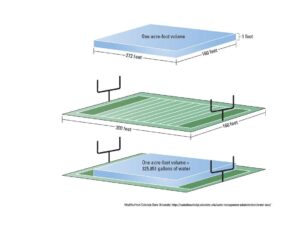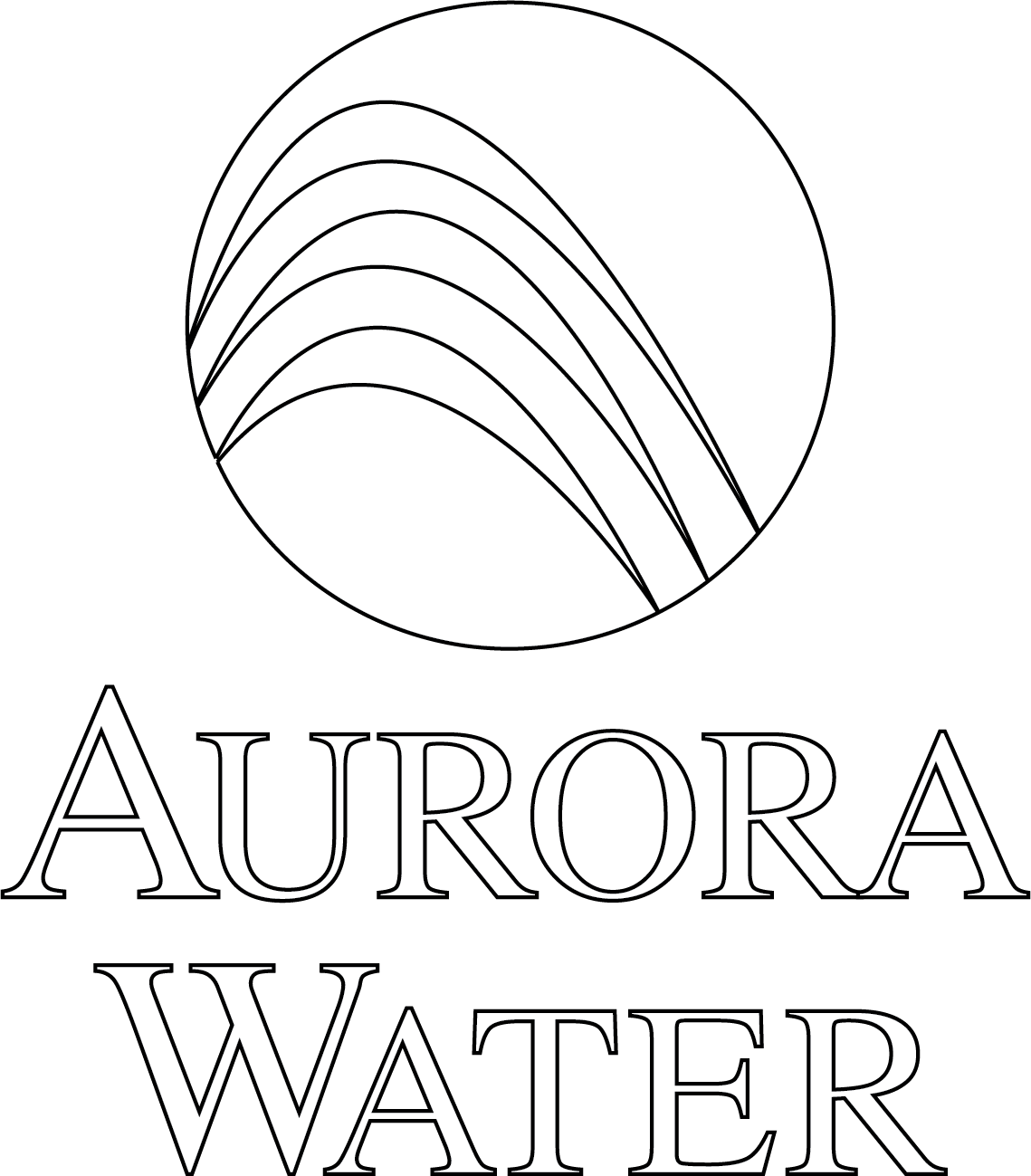Wild Horse Reservoir Project FAQs
These are the most common frequently asked questions (FAQs) that we have received for the proposed Wild Horse Reservoir Project separated into groups. If you have a question that is not addressed below, please send us your question at WildHorseReservoir@auroragov.org, and we will get back to you as soon as we can.
For more on why Wild Horse Reservoir is needed, please visit the Why Wild Horse Reservoir webpage.
Q. Why is there a need for Wild Horse Reservoir?
A. Aurora Water has one of the most comprehensive and effective water conservation and reuse programs in the country. However, water conservation and reuse alone cannot maintain Aurora Water’s emergency water reserves. Wild Horse Reservoir would provide the critical water storage—like a savings account—that Aurora Water requires to ensure reliable water delivery for community needs and maintain accessible emergency water reserves during severe and prolonged droughts or system emergencies, such as wildfires, pipeline breaks, or system outages.
Q. Is Wild Horse Reservoir needed to support future growth in Aurora?
A. The purpose of the Wild Horse Reservoir project is to enhance the resilience of Aurora Water’s systems. Through comprehensive and effective water conservation and reuse efforts, Aurora Water can meet projected community water needs in 2075 without additional storage but would be unable to maintain its emergency water reserves. Wild Horse Reservoir would enable Aurora Water to provide a reliable water supply while retaining its required emergency water reserves.
Q. Why do cities keep putting in new reservoirs?
A. Droughts greatly challenge Colorado. The Wild Horse Reservoir is a critical component of the infrastructure needed to ensure sustainable water deliveries to meet future demands and to enhance resilience during droughts or emergencies. Having more reservoirs also allows for better management of existing water rights by allowing flexibility during maintenance, providing consistent levels needed for environmental management and recreational use, and greater drought protection.
For even more information on how Wild Horse Reservoir would work, please visit the How It Would Work webpage.
Q. Would Wild Horse Reservoir require any new water rights? What does “no new water rights” actually mean?
A. Water stored in the new reservoir would be supplied by Aurora Water’s existing Arkansas and Colorado River water rights so no new water rights or decrees would be required for the project.
Under Colorado law, a water right is the right to divert, store, and use water. The proposed reservoir would give Aurora more flexibility and improve resilience throughout our water system. Given our current storage capacity and locations, not all water rights can be stored and used throughout the year.
Q. How would Wild Horse Reservoir be filled?
A. Wild Horse Reservoir would be off channel, meaning no river or stream would flow into or out of it. Water would be supplied into the reservoir through a new inlet pipeline connected to the existing Otero pipeline. A new outlet pipeline would be constructed to transport water from Wild Horse Reservoir to Spinney Mountain Reservoir as needed. No new water rights or decrees would be needed to fill the reservoir. View project maps on the Documents and Maps webpage.
Q. How long would it take to fill the reservoir?
A. It is estimated that it would take approximately four years to fill the reservoir under average water supply conditions.
Q. How would the water in Wild Horse Reservoir get to Aurora?
A. Water stored in Wild Horse Reservoir would be released into Spinney Mountain Reservoir via a new outlet pipeline that would connect to Wild Horse Reservoir. Water from Spinney Mountain Reservoir would then be released and flow down the South Platte River through several existing reservoirs (including Eleven Mile Reservoir) before reaching Aurora. View project maps on the Documents and Maps webpage.
Q. How would Wild Horse Reservoir compare to other reservoirs?
A. Wild Horse Reservoir would likely be the 23rd largest reservoir in Colorado when ranked by storage volume. Wild Horse Reservoir would be Aurora Water’s largest reservoir and would store approximately triple the water volume held by Aurora Reservoir. The table below compares the proposed size, storage, and depth of Wild Horse Reservoir to other Colorado reservoirs.
| Dillon | Aurora | Spinney | Antero | Wild Horse | |
|---|---|---|---|---|---|
| Acres of Land Footprint | 3,233 | 735 | 2,402 | 2,500 | ~1,700 |
| Acre-feet of Water Storage* | 257,304 | 31,604 | 53,651 | 20,000 | ~90,000 |
| Max Depth in ft | 177 | 101 | 60 | 20 | ~150 |
Note: *An acre-foot (af) is 325,851 gallons and is defined as the amount of water it takes to cover an acre of land with one foot of water. One acre is about the size of a football field and can serve three households in Aurora.

Photo Credit: Water Education Foundation
For even more information on review of the proposed Wild Horse Reservoir Project, please visit the Project Review and Permitting webpage.
Q. Who is doing the project’s environmental review?
A. The Bureau of Land Management (BLM), as the lead federal agency, is managing the federal National Environmental Policy Act (NEPA) review process and will prepare an Environmental Impact Statement (EIS) for the project. Learn more about the NEPA process.
Q. What are the alternatives to Wild Horse Reservoir that will be evaluated as part of the NEPA process?
A. Under NEPA, BLM is required to analyze a “reasonable range” of alternatives to Wild Horse Reservoir, which is Aurora Water’s proposed action. The NEPA analysis process helps BLM ensure there is informed decision-making. BLM will consider different ways (i.e., alternatives to the proposed action) to achieve the purpose and need of the project while considering potential environmental and social impacts. In addition to the Proposed Action, BLM currently plans to analyze a No Action Alternative—that is, what Aurora Water would do if BLM does not authorize Wild Horse Reservoir—and three other alternatives, including:
- Wild Horse South Reservoir Alternative
- Small Wild Horse Reservoir plus Denver Basin Aquifer Storage and Recovery (ASR) Alternative
- Spinney Mountain Reservoir Enlargement Alternative
This range of alternatives is preliminary and subject to change as BLM considers public input throughout the NEPA process. Learn more about the project alternatives.
Q. What other permits and authorizations are required?
A. Additional state and local permits and authorizations will be coordinated with the appropriate federal, state, and local government agencies, including Park County. Please see the Project Review and Permitting webpage for the latest information.
Q. What recreation would be offered at Wild Horse Reservoir?
A. Providing recreational opportunities in Park County at the proposed reservoir site is important to Aurora Water. Aurora Water is looking at what recreational uses may be most appropriate and complementary to those offered at other regional reservoirs. Learn more about proposed recreation for the project.
Q. Would Wild Horse Reservoir impact local groundwater?
A. Aurora Water does not own groundwater rights in Park County, and Wild Horse Reservoir is not expected to affect local groundwater. Potential groundwater impacts will be studied and disclosed as part of the NEPA process.
Q. Would Spinney Mountain Reservoir’s water levels be impacted by Wild Horse Reservoir?
A. If Wild Horse Reservoir is authorized by BLM and constructed, Spinney Mountain Reservoir would be used primarily to store water from the South Platte River and to maintain water in storage for recreational purposes and for emergencies. Spinney Mountain Reservoir would continue to help Aurora Water manage its voluntary flow program for the upper South Platte River known as the “Dream Stream.” Some variation in Spinney Mountain Reservoir levels occur now and would continue to be expected based on water supply conditions, such as drought, runoff, and seasonal changes.
Q. Would the “Dream Stream” be impacted by Wild Horse Reservoir?
A. Aurora Water would continue to honor all stream flow protocols. Aurora Water’s modeling for the project shows Wild Horse Reservoir would have minimal impacts on streamflow in the “Dream Stream.” BLM will conduct its own evaluation of potential streamflow impacts from the project and report the results of its analysis in the Draft EIS it will prepare.
Q. Would Wild Horse Reservoir negatively impact other rivers and streamflow?
A. Aurora Water would continue to honor all stream flow protocols and water rights. Wild Horse Reservoir would use Aurora Water’s existing Colorado and Arkansas River water rights so no new water rights or decrees would be sought to fill the reservoir. The reservoir would be off channel, meaning that it would not dam any rivers or streams. BLM will conduct an evaluation of potential streamflow impacts from the project and report the results of its analysis in the Draft EIS it will prepare.
Q. Why did Aurora Water choose Park County?
A. The proposed Wild Horse Reservoir site in Park County was selected for its proximity to the existing Otero Conveyance System, which currently transports approximately half of Aurora’s water supply from the mountains to Spinney Mountain Reservoir. In addition, the location has favorable topography and environmental conditions, including:
- The site is off channel and would not dam a stream or river
- Higher elevation reservoirs have less evaporation
- Based on studies completed by Aurora Water to date, constructing a reservoir at this location would have minimal environmental impacts**
- Aurora Water’s initial studies have not identified any jurisdictional wetlands or endangered species that would be impacted by Wild Horse Reservoir**
Note: **BLM will complete its own independent study of potential environmental impacts as part of the NEPA process.
Q. Has Park County been involved in the planning for Wild Horse Reservoir?
A. Yes, Aurora Water has met with Park County officials before evaluating the location and pursuing the Wild Horse Reservoir project. Aurora Water’s staff has established a strong and collaborative working relationship with Park County and will continue to coordinate with Park County as the project continues.
Q. Would there be any benefits to Hartsel and Park County from the project?
A. Yes, see the Benefits to Park County webpage for more information.
Q. Why is it called Wild Horse Reservoir?
A. The name “Wild Horse” originates from the geological formation that forms the “bowl” of the reservoir, known as “Wild Horse Canyon,” where the main dam is anticipated to be located.
Q. How do I find out if the proposed project will affect my property?
A. Please visit the Working with Landowners webpage for more information.
Q. Is Aurora Water still purchasing land?
A. Please visit the Working with Landowners webpage for more information.
Q. What are Aurora Water’s conservation and reuse programs?
A. Aurora Water has one of the most comprehensive and effective water conservation programs in the country. Even though Aurora’s population has grown, water use per person has actually decreased by more than 30% since 2000.
- Aurora was the first city in the state to limit non-functional turf grass (including common areas, curbside, and curbside for front yards).
- Aurora Water launched the first water reuse program in the state, and it remains the largest reuse system today.
- Aurora Water was an early adopter of using reclaimed water for irrigating parks and golf courses.
- Aurora Water’s Prairie Waters System was the first of its kind and remains the largest indirect potable reuse (IPR) system in Colorado, delivering up to 10 million gallons of water per day to Aurora Water’s water system. The Prairie Waters System is an innovative potable reuse system that uses a sustainable water source by recapturing river water as a cornerstone of its water supply.
- Aurora Water will likely expand the Prairie Waters System before completing Wild Horse Reservoir.
- Approximately 95% of the city’s water can be reused over-and-over again.
- Aurora Water is evaluating the use of direct potable reuse (DPR) (a method for recycling water).
Q. How much water does Aurora typically use annually?
A. The city uses approximately 55,000-58,000 acre-feet (or between 18-19 billion gallons) of water per year to serve over 400,000 people. An acre-foot (af) is 325,851 gallons, the amount of water it takes to cover an acre of land one foot deep. One acre is about the size of a football field. An acre-foot of water can serve three households for a year in Aurora.
Q. How much storage does the City of Aurora currently have?
A. Currently, Aurora Water has 156,000 acre-feet in reservoirs. Storage increases resilience to droughts and system outages. Learn more about why more storage is needed.
Visit the Construction FAQ webpage for the most common construction FAQs.
To stay up to date on the latest news and information, subscribe to the Wild Horse Reservoir newsletter.




